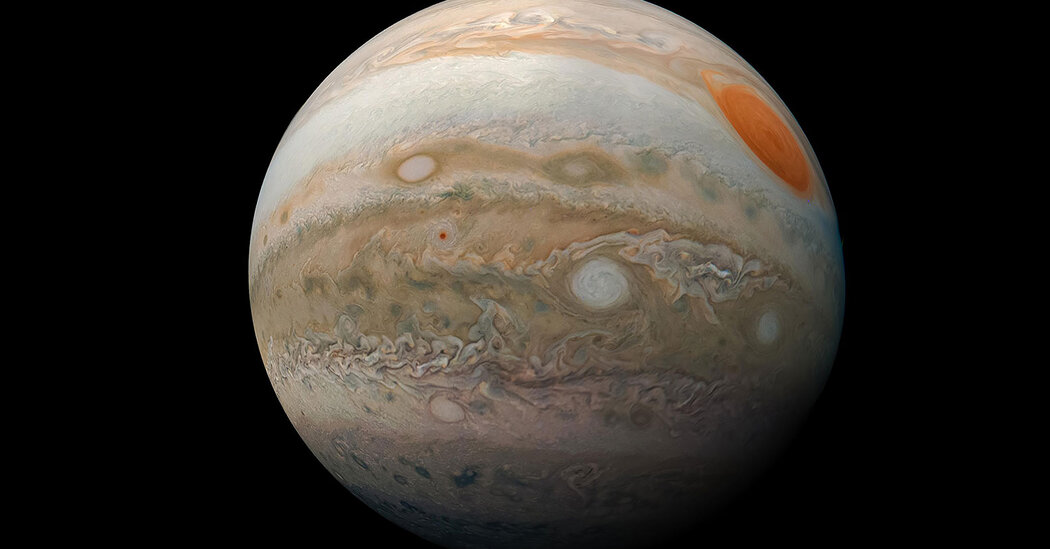The strength of the magnetic fields within the Great Blue Spot changes up to one percent each year, growing strongly in some places and weakening in others. By the end of the expanded mission in 2025, Moore will have nearly a decade of data to test his hypothesis, which predicts changes of up to 10 percent by that time. “Our model predicts it and we want to test it,” he said.
Scientists are also likely to face new mysteries. The Great Blue Spot is approximately the same latitude as the Great Red Spot. Are the two events related or are they different?
“The fact that they travel at different speeds suggests that they are unlikely to be relevant,” Moore said. But there may be some kind of causal system. At the end of the day, it’s a liquid planet. “
During the extended mission, Juno will cross all three major moons of Jupiter.
Last week, Juno gave scientists their first intimacy for more than 20 years, which was given to the largest canyon on Jupiter’s moons. At more than 5100 km wide, Ganymede is larger and larger than Mercury, and is the only known moon to form its own magnetic field.
Hansen-Koherzek compares Juno’s pictures of Kanmeet with old pictures. Parts of the surface are marked by craters often found on icy moons. Although there is still an ocean of liquid water under the Moon’s ice cap, the ice is believed to be about 100 kilometers thick, and the craters of the cone may have formed a few billion years ago, when the surface was hot and flexible, Hansen-Koherzek said.
“The floor in the fur is very less likely to come in contact with that water blanket,” he said. “However, if we saw him, he would be jumping and screaming too.”


:quality(75)/cloudfront-us-east-1.images.arcpublishing.com/elcomercio/W6Q6FIHSMVD4XOGPZQFFFYEYFA.jpg)


